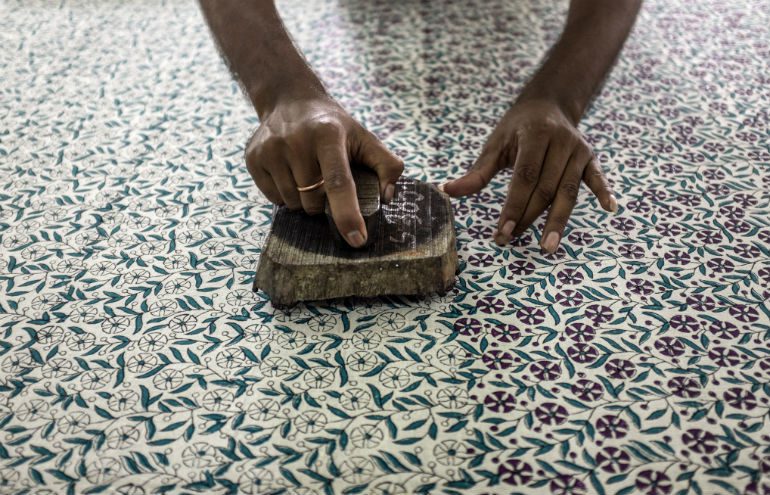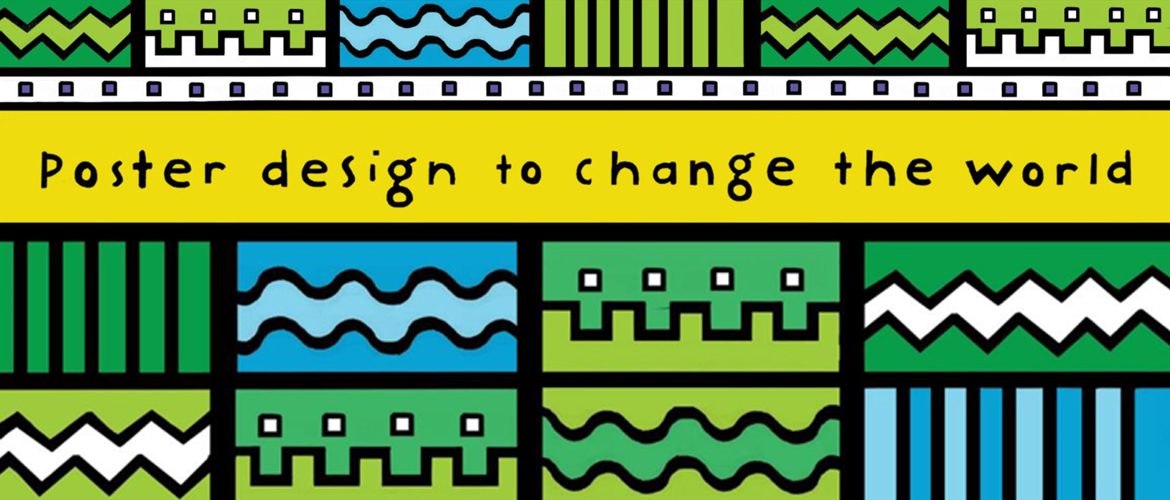Section 1 Part 1: Brief history of poster design
Step 1: Read through the overview and the detailed ‘look through history’ to learn about the history of poster design.

Step 2: Use the reading to create a poster history timeline (either in your art/design diary or digitally). You might locate and paste in printed examples of key works from the reading and annotate each work with the title and date. You could also add technical developments in poster design to the timeline.
Extension activity:
Choose a type of printing, such as silk-screen printing, to research. What can you find out about it? What is the process? What kind of look and feel does it create?
Key overview
A campaign poster is traditionally a paper or printed advertisement that’s designed to produce a particular result. A poster is designed to sell an idea or a product and its purpose is to engage and persuade the viewer. The campaign poster is usually one element of a series of actions towards a common goal.
A look through history
16th century:
The first posters took the form of printed notices that started replacing the town crier on street corners across Europe in the latter part of the 16th century. These black and white works were largely text based.
19th century:
Visually engaging posters that combined graphics and text were not produced until the late 19th century when technical advances in printmaking allowed the printing of three-colour posters at a relatively low cost.
This made them a convenient and successful way of conveying information. Theatre companies and book publishers in Paris and London were the first to make use of the poster. Traditionally these posters were very large and were created to be understood quickly and from some distance away.
20th Century:
French painter and lithographer Jules Cheret created many captivating posters between the 1860s and 1890s that depicted vibrant Parisian performers and nightlife scenes and promoted theatre productions.
“Bal du Moulin Rouge”, 1889 is a colour lithograph print that depicts voluptuous women, one of them on horseback, beckoning the viewer to pay the Moulin Rouge a visit — Paris’ most famous dance theatre. Artist Henri de Toulouse-Lautrec’s posters of the 1890s were known for their expressive nature, humour and characteristic strong colours and outlines. Toulouse-Lautrec’s posters have been credited with lifting the medium of lithography from the realm of advertising to high art.
With the outbreak of World War I the role of the poster changed dramatically. Suddenly the power of persuasive imagery and text was seen as having a role to play in changing the course of history. Prior to the advent of television and motion pictures, the poster was the cheapest and most effective means of conveying a message. The poster could reach hundreds of people immediately, it could communicate without an understanding of language, and it could persuade in both blunt and sophisticated ways.
The most famous example from this period is Alfred Leete’s recruitment poster: “Lord Kitchener Wants You”, 1914. The striking drawing of Lord Kitchener pointing at, and engaging directly with, the viewer made this the most recognisable and enduring image of WWI.
During the 20th century the role of the traditional paper poster declined in importance as audiences were bombarded with photography, radio and later, television. By World War II most posters were created using the mass production technique known as photo off-set, where an inked image is transferred from a plate to a rubber blanket and then to the paper.
By the 1960s posters had a new role in protest, advertising, promoting festivals and music. The silk screen printing technique, popularised by artist Andy Warhol in the 1960s, became a common method for creating posters and by the 1970s it was being taught in most Australian art schools.


At this time, Earthworks Poster Collective were one of the most widely known poster groups in Australia, operating out of the “Tin Sheds” at Sydney University and creating overtly political works that also often had a sense of humour. Similarly Matilda Graphics were a well known feminist poster group, and in the 1980s the very successful Redback Graphix used campaign posters to educate society about issues such as AIDS awareness, alcohol abuse and human rights issues.
21st century:
Posters today are most often printed digitally and are used alongside all other forms of advertising for political, social and cultural purposes. Campaign posters might be used alongside printed advertisements, online campaigns and an array of other marketing strategies. For this unit of work, when we speak of a campaign poster, we refer broadly to the persuasive imagery and text used as a medium for communication as part of a commercial, political or social enterprise. Contemporary campaign posters may be printed or published in digital format.
History of printing
For more, see Wikipedia’s ‘History of Printing’ pages.
| Woodblock printing | 200 |
|---|---|
| Movable type | 1040 |
| Printing press | c. 1440 |
| Etching | c. 1515 |
| Mezzotint | 1642 |
| Aquatint | 1772 |
| Lithography | 1796 |
| Chromolithography | 1837 |
| Rotary press | 1843 |
| Hectograph | 1869 |
| Offset printing | 1875 |
| Hot metal typesetting | 1884 |
| Mimeograph | 1886 |
| Photostat and Rectigraph | 1907 |
| Screen printing | 1910 |
| Spirit duplicator | 1923 |
| Xerography | 1938 |
| Phototypesetting | 1949 |
| Inkjet printing | 1951 |
| Dye-sublimation | 1957 |
| Dot matrix printing | 1968 |
| Laser printing | 1969 |
| Thermal printing | c. 1972 |
| 3D printing | 1984 |
| Digital printing | 1991 |
